- Brian
- September 26, 2023
- 8:05 am

Harry Collins
Answered on 8:05 am
100G Lambda Optics is an optical transceiver transmitting 100 gigabits per second (Gbps) of data over a single wavelength or lambda. They use a modulation technique called PAM4, which stands for Pulse Amplitude Modulation 4, to encode two bits of information per symbol. This allows them to achieve higher data rates than traditional NRZ (Non-Return-to-Zero) modulation, which encodes one bit per symbol.
100G Lambda Optics are compatible with 200G and 400G Ethernet standards, which use multiple lanes of 100G signals to achieve higher bandwidth. They can also interoperate with other 100G optics that use different modulation schemes or wavelengths, such as 100G DR (Duplex Reach), 100G FR (Four Wavelengths), or 100G LR4 (Long Reach). They can support various distances and applications, depending on the type and model of the transceiver.
- QSFP-100G-DR: 100GBASE-DR single lambda QSFP, up to 500m over duplex SMF.
- QSFP-100G-FR: 100GBASE-FR single lambda QSFP, up to 2km over duplex SMF.
- QSFP-100G-LR: 100GBASE-LR single lambda QSFP, up to 10km over duplex SMF.
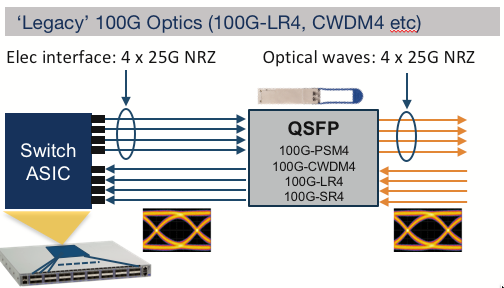
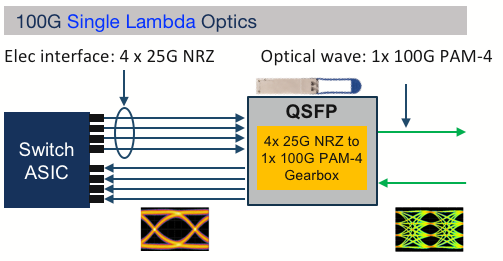
Some of the benefits of 100G Lambda Optics are:
They reduce the complexity and cost of the optical modules and the fiber infrastructure, as they use fewer components and wavelengths than other 100G optics.
They enable future-proofing and scalability of the network, as they can be reused or upgraded to new form factors or higher data rates without sacrificing performance or compatibility.
They provide operational flexibility and efficiency for data center operators, as they can connect to different types of devices and networks using the same type of optic.
People Also Ask
The NVIDIA GB300 NVLink Liquid-Cooled Switch
At this year’s GTC conference, NVIDIA introduced its latest GB300 AI chip and AI server. However, detailed information on the GB300 liquid-cooled switch has been scarce. The following images of the GB300 NVLink liquid-cooled switch were provided by the overseas partner STH. Displayed at NVIDIA GTC 2025, the GB300 NVLink
Understanding the Benefits of a 48-Port Gigabit Ethernet PoE Switch
In contemporary networking, a 48-port Gigabit Ethernet Power over Ethernet (PoE) switch holds untold business value because of its flexibility and completeness. With the rising popularity of IP devices like cameras, VoIP phones, and wireless access points, there is an increasing need for a centralized system that can both power
Unlocking the Potential of a 16-Port PoE Switch: A Comprehensive Guide
Implementing the Power over Ethernet (PoE) technology has changed the activities of modern networks, as it provides data and power supply through a single cable. Of many PoE options, the 16-port PoE switch seems cost-effective for businesses and network managers as it is flexible and scalable. This guide illustrates the
Optical Transceiver Modules Overcome High Temperatures in the Era of High-Speed Data Centers
The rapid advancement of artificial intelligence (AI) and large language models has resulted in an unprecedented surge in demand for high-speed optical transceiver modules within data centers and AI clusters. The operational speeds of these modules have expanded significantly—from 100 Gbps, suitable for entry-level data center applications, to 400 Gbps, commonly employed
Understanding Switch Ports: A Comprehensive Guide to VLAN Assignments and Switch Port Configurations
Throughout history, communication and connection have greatly evolved. Today, it can be done in mere seconds all throughout the globe. Switch ports are a fundamental part of global communication. If configured properly, canals of information, including devices, can be organized into clusters, which reduces response time tremendously. To maximize efficiency,
The Ultimate Guide to Choosing a 4 Port PoE Switch
The impact of well-chosen 4-Port Power over Ethernet (PoE) switches on the efficiencies and capabilities of a network cannot be overstated. Be it in setting up a home office, or small business network, or administering surveillance systems, having a dependable PoE switch to supply data and power to devices is
Related Articles
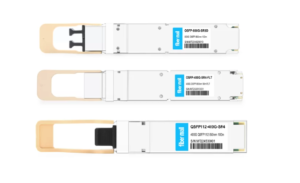
800G SR8 and 400G SR4 Optical Transceiver Modules Compatibility and Interconnection Test Report
Version Change Log Writer V0 Sample Test Cassie Test Purpose Test Objects:800G OSFP SR8/400G OSFP SR4/400G Q112 SR4. By conducting corresponding tests, the test parameters meet the relevant industry standards, and the test modules can be normally used for Nvidia (Mellanox) MQM9790 switch, Nvidia (Mellanox) ConnectX-7 network card and Nvidia (Mellanox) BlueField-3, laying a foundation for
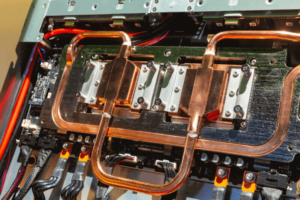
The NVIDIA GB300 NVLink Liquid-Cooled Switch
At this year’s GTC conference, NVIDIA introduced its latest GB300 AI chip and AI server. However, detailed information on the GB300 liquid-cooled switch has been scarce. The following images of the GB300 NVLink liquid-cooled switch were provided by the overseas partner STH. Displayed at NVIDIA GTC 2025, the GB300 NVLink
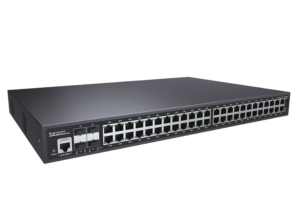
Understanding the Benefits of a 48-Port Gigabit Ethernet PoE Switch
In contemporary networking, a 48-port Gigabit Ethernet Power over Ethernet (PoE) switch holds untold business value because of its flexibility and completeness. With the rising popularity of IP devices like cameras, VoIP phones, and wireless access points, there is an increasing need for a centralized system that can both power
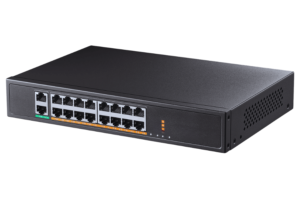
Unlocking the Potential of a 16-Port PoE Switch: A Comprehensive Guide
Implementing the Power over Ethernet (PoE) technology has changed the activities of modern networks, as it provides data and power supply through a single cable. Of many PoE options, the 16-port PoE switch seems cost-effective for businesses and network managers as it is flexible and scalable. This guide illustrates the
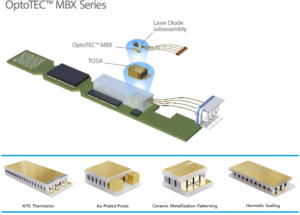
Optical Transceiver Modules Overcome High Temperatures in the Era of High-Speed Data Centers
The rapid advancement of artificial intelligence (AI) and large language models has resulted in an unprecedented surge in demand for high-speed optical transceiver modules within data centers and AI clusters. The operational speeds of these modules have expanded significantly—from 100 Gbps, suitable for entry-level data center applications, to 400 Gbps, commonly employed
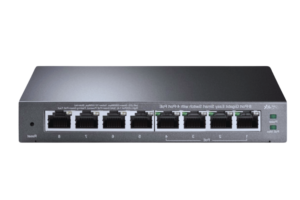
Understanding Switch Ports: A Comprehensive Guide to VLAN Assignments and Switch Port Configurations
Throughout history, communication and connection have greatly evolved. Today, it can be done in mere seconds all throughout the globe. Switch ports are a fundamental part of global communication. If configured properly, canals of information, including devices, can be organized into clusters, which reduces response time tremendously. To maximize efficiency,
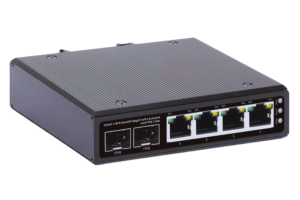
The Ultimate Guide to Choosing a 4 Port PoE Switch
The impact of well-chosen 4-Port Power over Ethernet (PoE) switches on the efficiencies and capabilities of a network cannot be overstated. Be it in setting up a home office, or small business network, or administering surveillance systems, having a dependable PoE switch to supply data and power to devices is
Related posts:
- If the Server’s Module is OSFP and the Switch’s is QSFP112, can it be Linked by Cables to Connect Data?
- Can I Plug an OSFP Module into a QSFP-DD Port, or a QSFP-DD Module into an OSFP Port?
- What is the Difference Between 400G-BIDI, 400G-SRBD and 400G-SR4.2?
- What is the 100G-SRBD (or “BIDI”) Transceiver?
